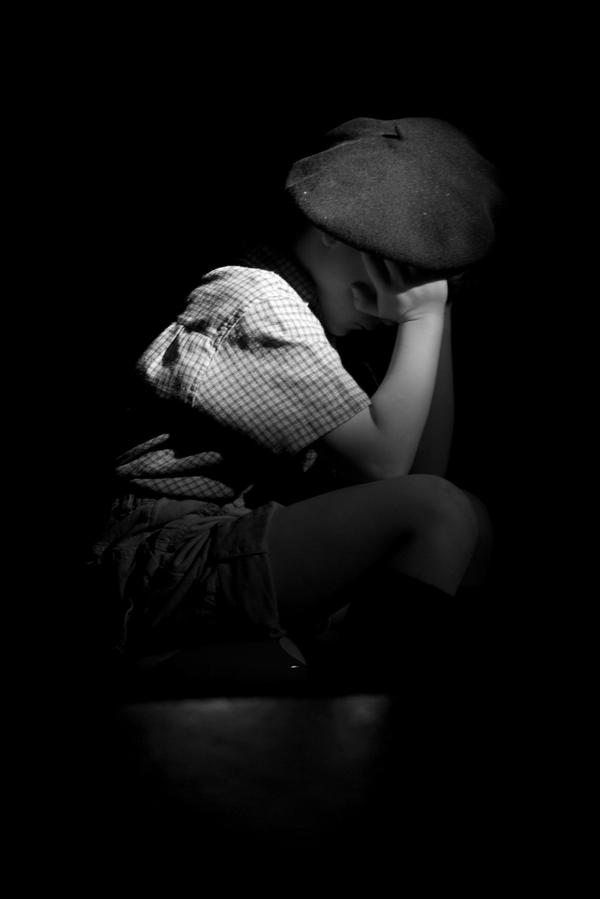Sad Boy Wallpaper Biography
Source (Goole.com.pk)In autumn of 1880, after more than a year living as a pauper in the Borinage, Vincent left for Brussels to begin his art studies. Vincent was inspired to begin these studies as a result of financial help from his brother, Theo. Vincent and Theo had always been close as children and throughout most of their adult lives maintained an ongoing and poignantly revealing correspondence. It is these letters, in total more than 700 extant, which form most of our knowledge of Van Gogh's perceptions about his own life and works.
1881 would prove to be a turbulent year for Vincent van Gogh. Vincent applied for study at the Ecole des Beaux-Art in Brussels, although the biographers Hulsker and Tralbaut conflict with regards to the details. Tralbaut suggests a short and unremarkable tenure with the school, whereas Hulsker maintains that Vincent's application for admission was never accepted. Whatever the case, Vincent continued drawings lessons on his own, taking examples from such books as Travaux des champs by Jean-François Millet and Cours de dessin by Charles Bargue. In the summer Vincent was once again living with his parents, now situated in Etten, and during that time he met his cousin Cornelia Adriana Vos-Stricker (Kee). Kee (1846-1918) had been recently widowed and was raising a young son on her own. Vincent fell in love with Kee and was devastated when she rejected his advances. The unfortunate episode concluded with one of the most memorable incidents in Van Gogh's life. After being spurned by Kee, Vincent decided to confront her at her parents house. Kee's father refused to let Vincent see his daughter and Vincent, ever determined, put his hand over the funnel of an oil lamp, intentionally burning himself. Vincent's intent was to hold his hand over the flame until he was allowed to see Kee. Kee's father quickly defused the situation by simply blowing out the lamp and Vincent left the house humiliated.
Despite emotional setbacks with Kee and personal tensions with his father, Vincent found some encouragement from Anton Mauve (1838-88), his cousin by marriage. Mauve had established himself as a successful artist, and from his home in The Hague, supplied Vincent with his first set of watercolours--thus giving Vincent his initial introduction to working in colours. Vincent was a great admirer of Mauve's works and was deeply grateful for any instruction that Mauve was able to provide. Their relationship was a pleasant one, but would suffer due to tensions brought about when Vincent began living with a prostitute.
'Sien' Vincent van Gogh met Clasina Maria Hoornik (1850-1904) in late February 1882, in The Hague. Already pregnant with her second child when Van Gogh met her, this woman, known as "Sien", moved in with Vincent shortly afterward. Vincent lived with Sien for the next year and a half. Their relationship was a stormy one, partly due to both of their volatile personalities and also because of the strain of living in complete poverty. Vincent's letters to Theo show him to be devoted to Sien and especially her children, but his art was always his first passion--to the exclusion of all other concerns, including food. Sien and her children posed for dozens of drawings for Vincent, and his talents as an artist grew considerably during this period. His early, more primitive drawings of the coal miners in the Borinage made way for far more refined and emotion-laden works. In the drawing Sien, Sitting on a Basket, with a Girl, for example, Vincent masterfully depicts quiet domesticity, as well as an underlying sense of despair--feelings which would truly define Van Gogh's 19 months living with Sien.
1883 was another year of transition for Van Gogh: both in his personal life and in his role as an artist. Vincent began to experiment with oil paints in 1882, but it wasn't until 1883 that he worked in this medium more and more frequently. As his drawing and painting skills advanced, his relationship with Sien deteriorated and they parted ways in September. As with his failure in The Borinage, Vincent would spend his time recovering from this failed relationship in isolation. With much regret, particularly because of his feelings for Sien's children, Vincent left The Hague in mid-September to travel to Drenthe, a somewhat desolate district in The Netherlands. For the next six weeks Vincent lived a rather nomadic life, moving throughout the region and drawing and painting the remote landscape and its inhabitants.
Once again, Vincent returned to his parents' home, now in Nuenen, in late 1883. Throughout the following year Vincent van Gogh continued to refine his craft. He produced dozens of paintings and drawings during this period: weavers, spinners and other portraits. The local peasants proved to be his favourite subjects--in part because Van Gogh felt a strong affinity toward the poor working labourers and partly because he was such an admirer of the painter Millet who himself produced sensitive and compassionate paintings of workers in the fields. Vincent's romantic life took yet another dramatic and unhappy turn that summer. Margot Begemann (1841-1907), whose family lived next door to Vincent's parents, had been in love with Vincent, and the emotional upheaval of the relationship lead her to attempt suicide by poison. Vincent was greatly distraught over the incident. Margot eventually recovered, but the episode upset Vincent a great deal and he referred to it in his letters on a number of occasions.
A biography is a detailed description or account of someone's life. It entails more than basic facts (education, work, relationships, and death), a biography also portrays a subject's experience of these events. Unlike a profile or curriculum vitae (résumé), a biography presents a subject's life story, highlighting various aspects of his or her life, including intimate details of experience, and may include an analysis of a subject's personality.
Biographical works are usually non-fiction, but fiction can also be used to portray a person's life. One in-depth form of biographical coverage is called legacy writing. Biographical works in diverse media—from literature to film—form the genre known as a biography.
A biography is a detailed description or account of someone's life. It entails more than basic facts (education, work, relationships, and death), a biography also portrays a subject's experience of these events. Unlike a profile or curriculum vitae (résumé), a biography presents a subject's life story, highlighting various aspects of his or her life, including intimate details of experience, and may include an analysis of a subject's personality.
Biographical works are usually non-fiction, but fiction can also be used to portray a person's life. One in-depth form of biographical coverage is called legacy writing. Biographical works in diverse media—from literature to film—form the genre known as a biography.
An authorized biography is written with the permission, cooperation, and, at times, participation of a subject or a subject's heirs. An autobiography is about a life of a subject, written by that subject or sometimes with a collaborator.
Sad Boy Wallpaper And Girl In Love Alone Wallpaper Alone Crying Face And Girl In Rain Images Pic

Sad Boy Wallpaper And Girl In Love Alone Wallpaper Alone Crying Face And Girl In Rain Images Pic

Sad Boy Wallpaper And Girl In Love Alone Wallpaper Alone Crying Face And Girl In Rain Images Pic

Sad Boy Wallpaper And Girl In Love Alone Wallpaper Alone Crying Face And Girl In Rain Images Pic

Sad Boy Wallpaper And Girl In Love Alone Wallpaper Alone Crying Face And Girl In Rain Images Pic

Sad Boy Wallpaper And Girl In Love Alone Wallpaper Alone Crying Face And Girl In Rain Images Pic
.jpg)
Sad Boy Wallpaper And Girl In Love Alone Wallpaper Alone Crying Face And Girl In Rain Images Pic

Sad Boy Wallpaper And Girl In Love Alone Wallpaper Alone Crying Face And Girl In Rain Images Pic

Sad Boy Wallpaper And Girl In Love Alone Wallpaper Alone Crying Face And Girl In Rain Images Pic

Sad Boy Wallpaper And Girl In Love Alone Wallpaper Alone Crying Face And Girl In Rain Images Pic

No comments:
Post a Comment